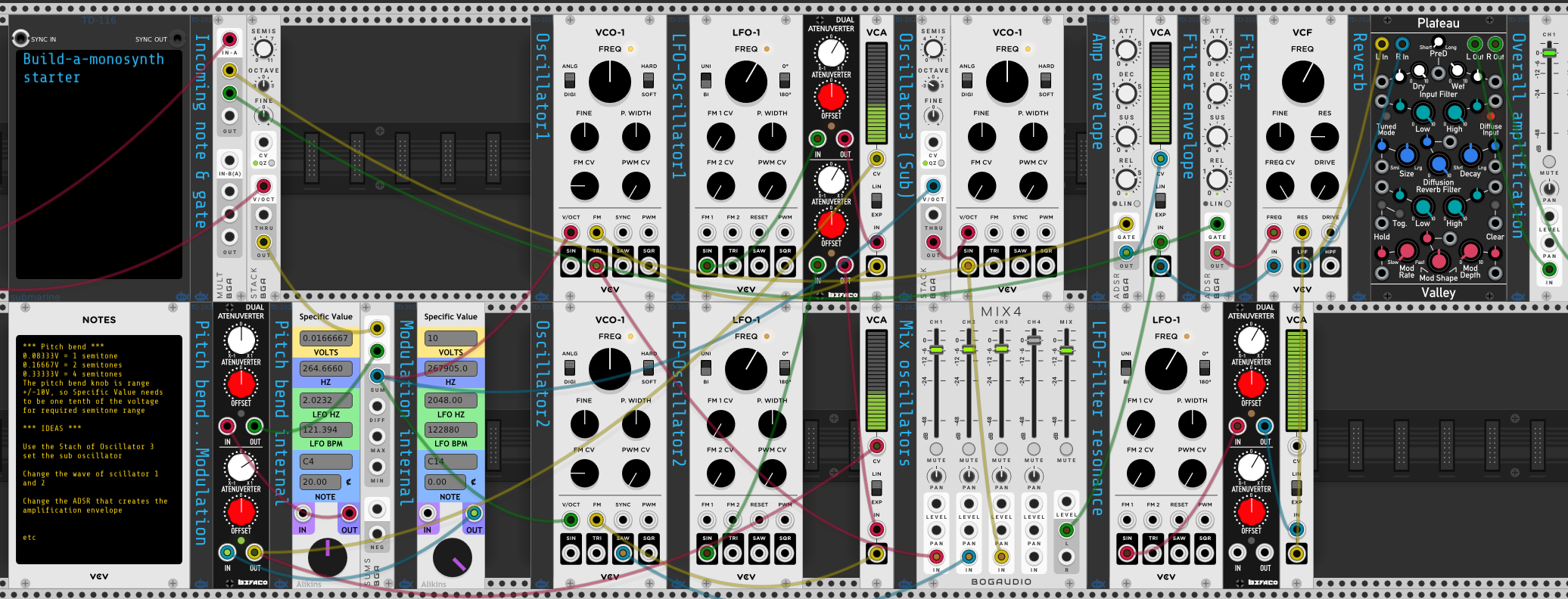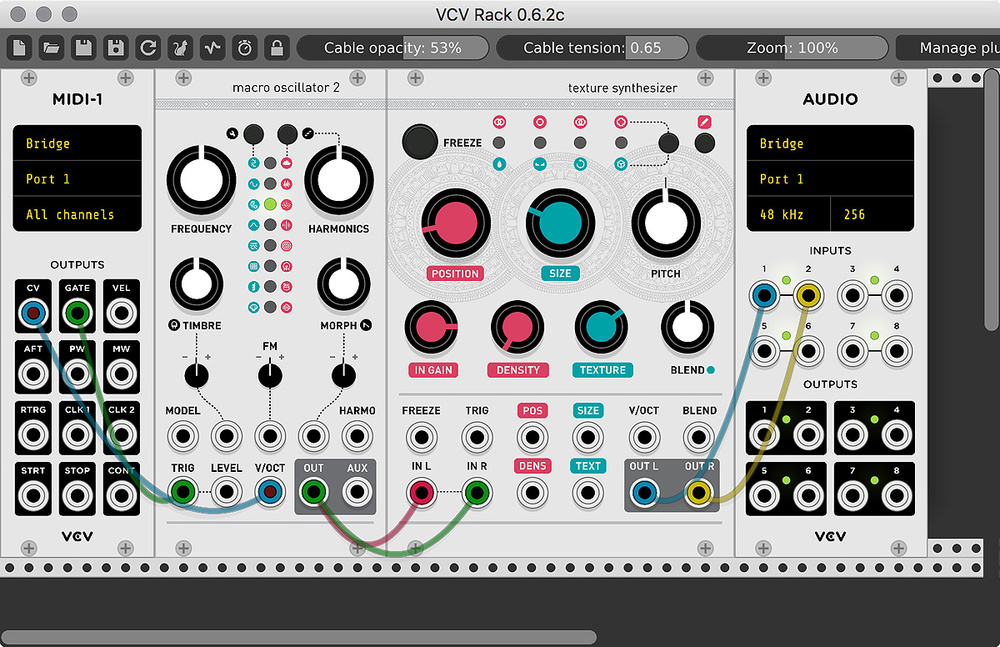

Note however than in the rather advanced use case we are describing here, and in general, when external synchronization is involved, it is best to find the right buffer size + sampling rate combo and stick to it. You could also need to use the smallest possible buffer size to reduce the latency to the minimum when processing a live instrument, or on the other hand use a larger buffer size when running very large and CPU intensive patches. You might want for instance to use a higher sampling rate when doing high quality audio recordings. It is very important to adjust these settings to adapt to your current project. Here are the parameters we used for this session:
#Midi patchbay tutorial drivers
When using a sound card with ASIO drivers (recommended) these parameters are configured in the ASIO control panel, which is accessible by clicking on the "configure" button, next to the active wave engine, in Rack Performer configuration menu. The first thing you should do when starting a new project is to select the proper audio parameters, namely the sampling rate and the buffer size, as their combination determines the sound quality and the latency, as well as having a direct relationship to the CPU usage.

If you don't have any MIDI patchbay and have for instance only two MIDI inputs and two MIDI outputs, like in the EMU X-MIDI 2x2 that we also use sometimes, and if your MIDI keyboard (or controller) has MIDI thru capacities, the MIDI part of the setup can be simplified as in the following diagram: We recommend by order of preference: PCIe, PCI, Firewire and USB. Note that any sound card should work, but performance tend to vary depending on the bus technology used.
#Midi patchbay tutorial Pc
Rack-mounted PC with Intel quad core Q6600 CPU at 2.4GHz, 4GB of RAM, and running Windows XP SP3.Motu Traveler Mk1 sound card, connected to the PC via a Firewire link.M-Audio MIDI Sport 8x8 interface and patchbay, connected to the PC via a USB2 link.MIDI keyboard and MIDI controller, both connected to the MIDI interface.Nord G2 Modular Engine as slave MIDI expander, receiving clock from the MC303 and MIDI from the PC and sending its audio output to the sound card.Roland MC303 "Groovebox" as synchro and transport master, with its audio and MIDI outputs connected to the PC via the sound card and MIDI interface.Here is a breakdown of the various components:

Let's start with our hardware setup and see how everything is connected.ĭo not let the diagram impress you, the setup we are using is less sophisticated than it looks.

Solutions are possible, we will explore a few, but it is always a matter of trade-offs. As we will see in the later parts of this article, getting everything perfectly aligned with this particular setup will prove quite challenging, due to the re-injection loops present in our topology. We will also control a Nord G2 Modular Engine directly from Rack Performer via MIDI output, but here again any other synthesizer with MIDI input support could be used instead. We will be using an old Roland MC303 "Groovebox" as MIDI master, but any machine with an internal sequencer and a MIDI output port should do the trick too (note: if you use for instance an Akai MPC or similar machine, you will have to use the MIDI timecode (MTC) protocol instead of MIDI clock, but this works essentially the same)
#Midi patchbay tutorial manual
This study covers a lot of advanced aspects of the application, including external clock synchronization and transport control, with the MIDI clock and standard MIDI transport protocols, MIDI routing (thru), MIDI mapping, manual patch delay compensation, VST instruments, VST effects, VST sequencers, as well as internal modules and much more! In this illustrated practical case, we are going to show you how Rack Performer can be integrated into your existing MIDI setup, and work alongside other machines to play electronic music live.


 0 kommentar(er)
0 kommentar(er)
